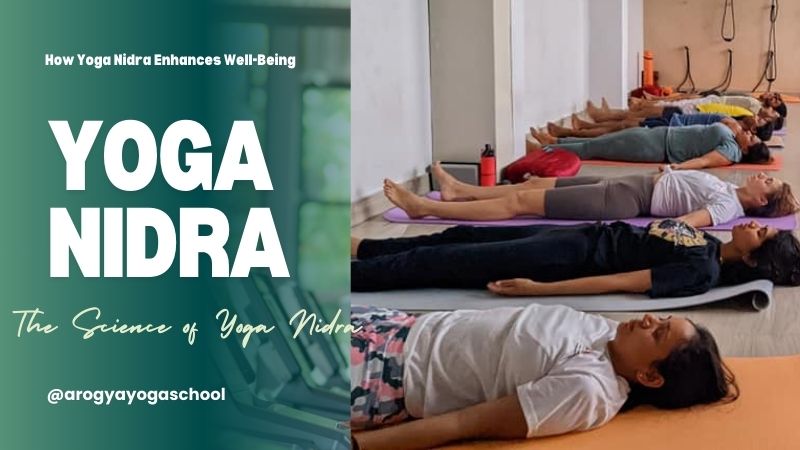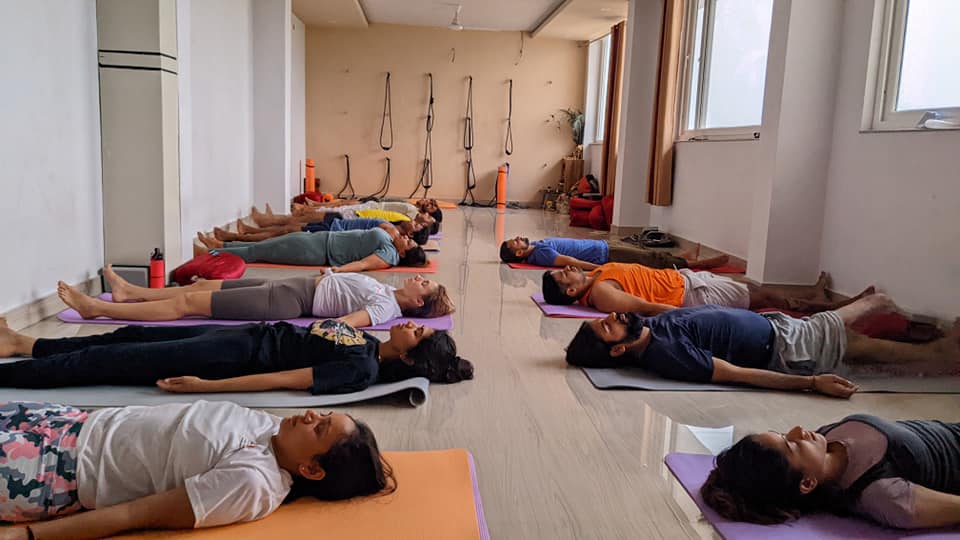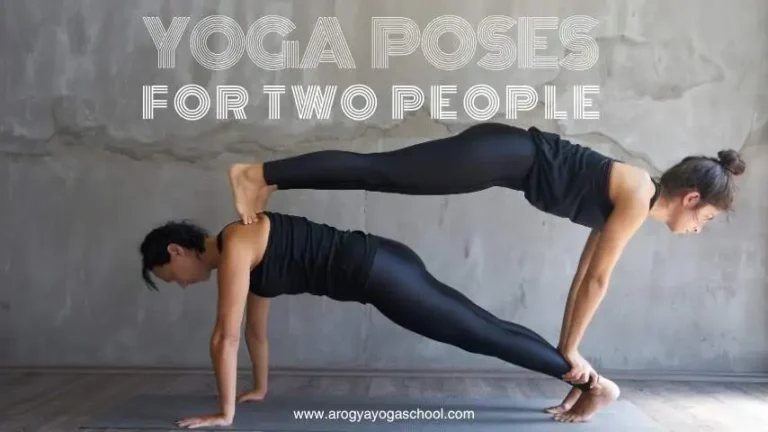
Unraveling the Mysteries of Yoga Nidra: A Comprehensive Exploration of Its Impact on Mind and Body
In the busy busy world we live in, finding moments of stillness is hard to come by. Practicing concepts like Yoga Nidra can provide a way to ourselves into profound relaxation and rejuvenation amidst our busy lives. Also very popularly known as the “yogic sleep,” Yoga Nidra is a condition of conscious awareness that promotes deep state of relaxation and self-discovery. But do you know what exactly happens to our minds and bodies while we perform this practice? This article sheds light on the effectiveness of Yoga Nidra, and it is backed by reliable scientific research and evidence.

What is Yoga Nidra?
Yoga Nidra is a guided relaxation exercise like meditation that helps individuals make their consciousness reach a transitional phase between sleep and wakefulness. Traditionally practiced in a lying down supine position. This promotes intense relaxation while maintaining awareness, imagine sleeping but with complete awareness, allowing the one practicing, to understand their innermost thoughts and feelings. The practice commonly incorporates body scans, breath work with complete awareness, and detailed visualizations, leading a journey towards your internal world.
Yoga Nidra Benefits
1. Yoga Nidra Physiological Benefits
Research findings demonstrate that Yoga Nidra can exert a considerable influence on physiological systems. A study published in the International Journal of Yoga revealed that people who practice yoga nidra experienced reductions in heart rate, blood pressure, and levels of cortisol—the stress hormone. This totally matches with findings that suggest Yoga Nidra can activate the parasympathetic nervous system, which in turn promote relaxation and recovery.
- Stress Reduction: A meta-analysis conducted in the Journal of Clinical Psychology concluded that Yoga Nidra is a highly effective intervention for reducing stress and anxiety levels. The calming techniques involved in the practice have been shown to lower cortisol (a hormone that helps the body respond to stress) levels, leaving you at a more relaxed state for both body and mind.
2. Yoga Nidra Mental Health Advantages
Yoga Nidra is not just a superficial physical practice to do while laying on your back; it also offers a great help psychologically. Research by the University of Utah found out that participants who engaged in Yoga Nidra reported significantly decreased symptoms of anxiety and depression. As we know in today’s society, where mental health concerns are becoming more widespread this topic is more relevant than ever.
- Enhanced Mental Clarity: The practice enhances brain power by improving cognitive function, fostering mental clarity and sharpening the brain. A study in Cognitive Processing found that regular practitioners of Yoga Nidra showed improvements in memory retention and focus, likely due to its power to heal your brain cells.
3. Yoga Nidra Neurobiological Impact
Recent studies have begun to explore how Yog Nidra can actually affect the brain for the better. When the practitioner’s brains were run through MRI scans, the scans happened to show increased activity in areas of the brain related to emotion regulation and self-awareness, our prefrontal cortex. This suggests that Yoga Nidra may enhance and help with a greater sense of emotional stability and resilience.
- Brainwave Patterns: During Yog Nidra, brainwave activity shifts from beta waves (alertness) to theta (relaxation & meditation) waves. This transition is crucial as it is only in this transition that our body heals and recovers from stress.
Yoga nidra teacher training
Join our yog nidra teacher training session
How Yoga Nidra Enhances Well-Being
1. Nidra yoga sleep
Many individuals struggle with improper sleep, because of stress, anxiety leading to fatigue and reduced quality of life. Yoga Nidra has been shown to improve sleep quality significantly. A study in the Journal of Clinical Psychology revealed that participants practicing Yoga Nidra experienced longer, deeper and more effective sleep cycles.
- Better Sleep Hygiene: Including Yoga Nidra into your night time routine can signal the body to relax and prepare for restful sleep, it is an effective unwinding activity for those struggling with insomnia or any kind of sleep-related issues. A good sleep is very important as only when we are completely relaxed, our body heels.
2. Balancing Emotions
Yoga Nidra provides a gentle way for people to understand their emotions safely. By creating a safe environment of self-acceptance, individuals can confront and process emotional wounds, leading to healing and personal growth.
- Trauma Recovery: Research published in the Journal of Traumatic Stress has shown that Yoga Nidra can be an effective tool for trauma survivors, helping them process traumatic experiences very gently and leading to healthier coping mechanisms.
3. Increased Mindfulness and Presence
Practicing Yog Nidra cultivates mindfulness, the ability to be present in the moment without judgment in complete surrender and acceptance. This skill is invaluable in today’s fast-paced world, where everything is trying to grab our attention.
- Mindfulness-Based Interventions: Studies in mindfulness-based stress reduction (MBSR) highlight how Yoga Nidra enhances mindfulness, resulting in significantly reduced anxiety and improved overall well-being.
The Importance Of Intentions in Yoga Nidra
One of the unique aspects of Yog Nidra is the setting of intentions before the practice, in Sanskrit known as “Sankalpa.” This encourages individuals to state what area they wish to work on clearly during the session, enhancing focus on that particular area leading to personal growth and clarity.
- Research Insights: A study in the Journal of Health Psychology found that participants who set intentions before practicing any mindfulness practices reported higher levels of motivation and goal attainment, emphasizing the power of intention in the healing process. This happens because when you set an intention, it minimizes the brain fog and gives you clarity.
How to do yoga nidra – Yoga Nidra 20 minutes
1. Find a Peaceful Spot
Choose a comfortable environment with pin drop silence where you won’t be disturbed. This is essential to allow your body and mind to relax fully. You can darken the room if the lights bother you.
2. Lay on Your Back Into Relaxing Position
Lay on your back with your arms at your sides in supine position, ensuring you’re very comfortable without any tension in the body. You can use cushions or blankets as needed to support your body to be comfortable.
3. Follow a Guided Session Online or Offline
You can listen to a guided Yog Nidra session, from a recording or attend a live yoga nidra session led by an instructor. The guidance helps you sink through the stages of relaxation easily.
4. Set Your Intention Right
As you settle into the practice, take a moment to set your personal intention. This could be a goal you wish to achieve, a quality you want to cultivate in yourself, or an emotional release you seek. Ask yourself why you want to do what you are doing and what you wish to get out of this.
5. Allow Yourself to Drift and Surrender
As you listen and follow the instructions, allow your mind to drift between wakefulness and sleep, don’t try to control anything. Embrace the sensations and feelings that arise without judgment and surrender in complete acceptance, good or bad.

Why Choose Arogya Yoga School?
At Arogya Yoga School, we believe in the transformative power of Yoga Nidra. We have experienced instructors who are dedicated to take you through this powerful practice and to completely prepare you by equipping you with necessary tools to guide someone else through this practice.
Yoga nidra certification
3 Days Yog Nidra Certification is Yoga Alliance USA Certified. Our teachers ensure you receive the support you need to explore the depths of relaxation, connect with yourself and how you can facilitate others with the same.
Contact us at Arogya Yoga School to book your spot for Yoga Nidra workshop today!
Yoga Teacher Training and Yoga Nidra
If you’re considering deepening your practice in the field of yoga, you might also be interested in our comprehensive yoga teacher training programs. These courses not only explore the physical aspects of yoga but also thoroughly delve into the philosophical and theoretical subjects.
For a detailed exploration of all your questions about yoga teacher training, check out our carefully curated informative article here.
Conclusion
Yog Nidra is a powerful practice that cultivates peace, clarity, and self-connection. It offers enormous benefits for both mind and body that are well-backed up by scientific research, making it an even valuable tool for any and everyone looking to improve their overall well-being. By dedicating time to this practice consistently, you can improve your overall being.
In a world that often feels chaotic and imbalanced, Yoga Nidra provides a refuge of calm. As you embark on your journey with this transformative practice, remember that every moment spent in self-discovery is a step towards greater health and happiness making you reach your highest potential.
Whether you’re a professional yogi or just starting out this journey, incorporating Yoga Nidra into your routine can be extremely beneficial. Experience the magic of powerful yogic sleep, and unlock the divine potential that lies within you.







